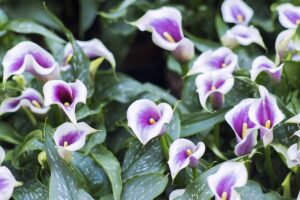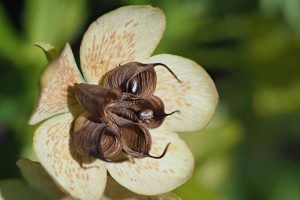Like most bulbs, crocuses prefer to be left undisturbed, their bulbs cozily snuggled into the soil for many years. But there are times when you may want to lift and store them for a bit.
A sure sign that warm, sunny days are nearing, their cheery flowers are among the earliest of spring bulbs, often pushing through snow to herald the end of winter with their rich colors!

We link to vendors to help you find relevant products. If you buy from one of our links, we may earn a commission.
They have outstanding cold hardiness, with the small corms suitable for USDA Zones 3 to 8, and they handle freezing temperatures with ease. So the bulbs don’t need to be stored for cold protection.
But they do benefit from division every five years or so to prevent overcrowding, which drains the plants of vigor and results in fewer and smaller flowers.
And there can be other reasons to lift and store bulbs for a few months as well, like when you’re reworking a bed or redesigning a container – you may want to hold off on replanting your bulbs until fall arrives.
Or maybe you’re going to try your hand at forcing bulbs indoors and want a supply of cured bulbs ready for planting when the time is right.
Whatever your reasons for lifting them, you’ll want to ensure it’s done at the correct time so you’ll have large, healthy corms loaded with energy for next year.
If your spade is poised, let’s unearth the steps on how to store crocus bulbs!
Here’s what you’ll find ahead:
What You’ll Learn
Spring-Flowering Bulbs
Crocus is a genus of perennial, spring-flowering bulbs in the iris family, Iridaceae.
Low-growing plants with large flowers, the small corms – not true bulbs, but similar – have superb cold hardiness and the intensely colored flowers often emerge in late winter before spring officially arrives.

They’re a popular choice for seasonal ground covers, in naturalized plantings, and in beds or borders, and they make a handsome container plant as well.
After flowering early in the growing season, the foliage and roots start to die back as they prepare to enter their summer dormant period.
No growth occurs over summer but with the arrival of fall rains, roots resume growth as the bulbs come partially out of dormancy.
With the uptake of nutrients and water, offsets are pupped in cool fall temperatures and some foliage may appear at this time as well.
The corms remain in a semi-dormant state over winter and need an extended chill time to finally break out of dormancy. After chilling, and once the days start to lengthen in February, flowers follow shortly thereafter.
Knowing their growth cycle is important because it holds the key to when to lift your bulbs. But it should be noted that the instructions in this guide refer to spring flowering crocuses only.
Other varieties that bloom in fall, such as Beiderstein’s (C. speciosus), saffron (C. sativa), and white autumn crocuses (C. ochroleucus), plus species of Colchicum, have different growth patterns.
When and How to Lift
By the time all the foliage has died back in late spring to early summer, the corms are dormant and can be safely lifted.
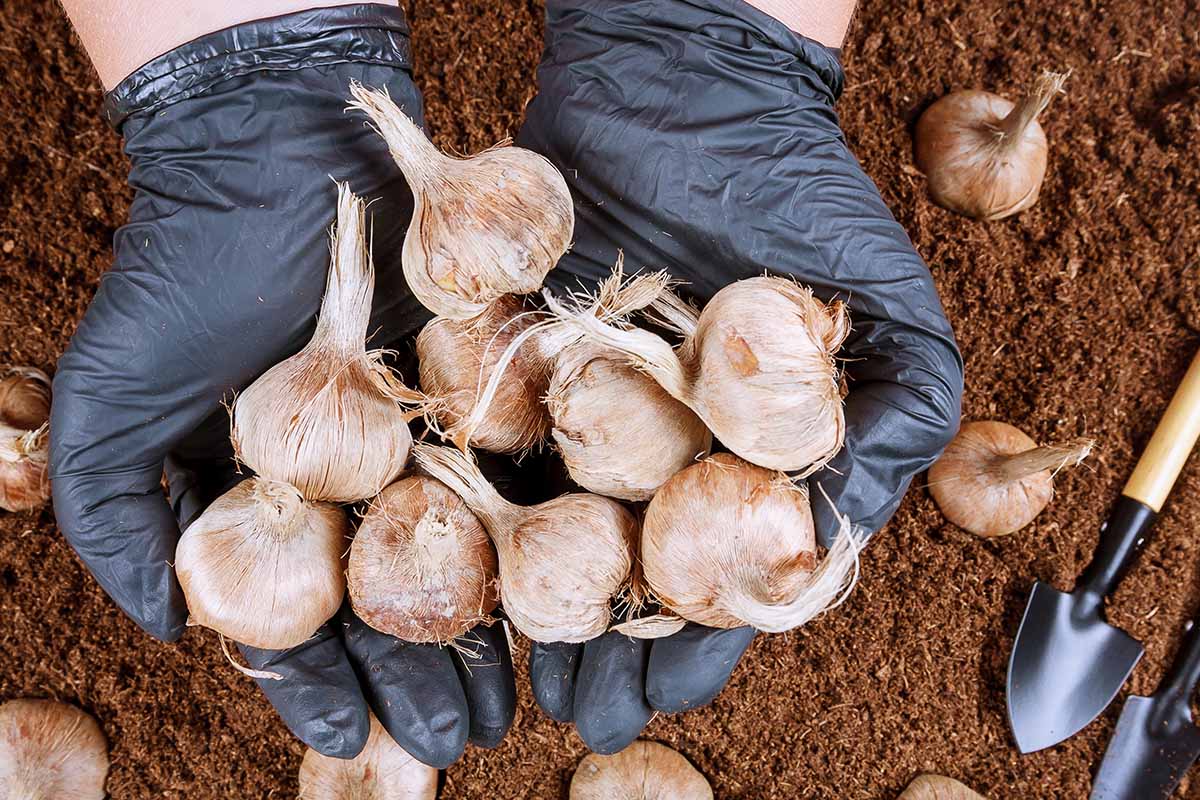
To tell if they’re dormant, the foliage should be brown, papery, and easily pulled free.
Avoid lifting corms before the foliage has died back – the leaves are needed to collect and process energy through photosynthesis, which is then stored in the corms.
Before they enter dormancy, it’s a good idea to mark the center of the clump with a garden tag – this aids with accuracy when digging them up.
Use a clean trowel or spade to dig around the clump carefully, allowing four to six inches of ease out from the root zone to prevent cutting or damaging corms.
Lift the clumps and use your fingers to pull the corms apart.
Discard any damaged bulbs or ones that are moldy, soft, or too small. Generally, cormlets that are less than half an inch in circumference can be discarded.
Use your fingers or a soft brush to remove surface soil but leave the papery tunics intact.
After lifting, the corms need to cure before going into storage. That’s next!
How to Store
Freshly dug corms require curing time to dry before storage – excess moisture can cause mold and have a negative impact on their health.
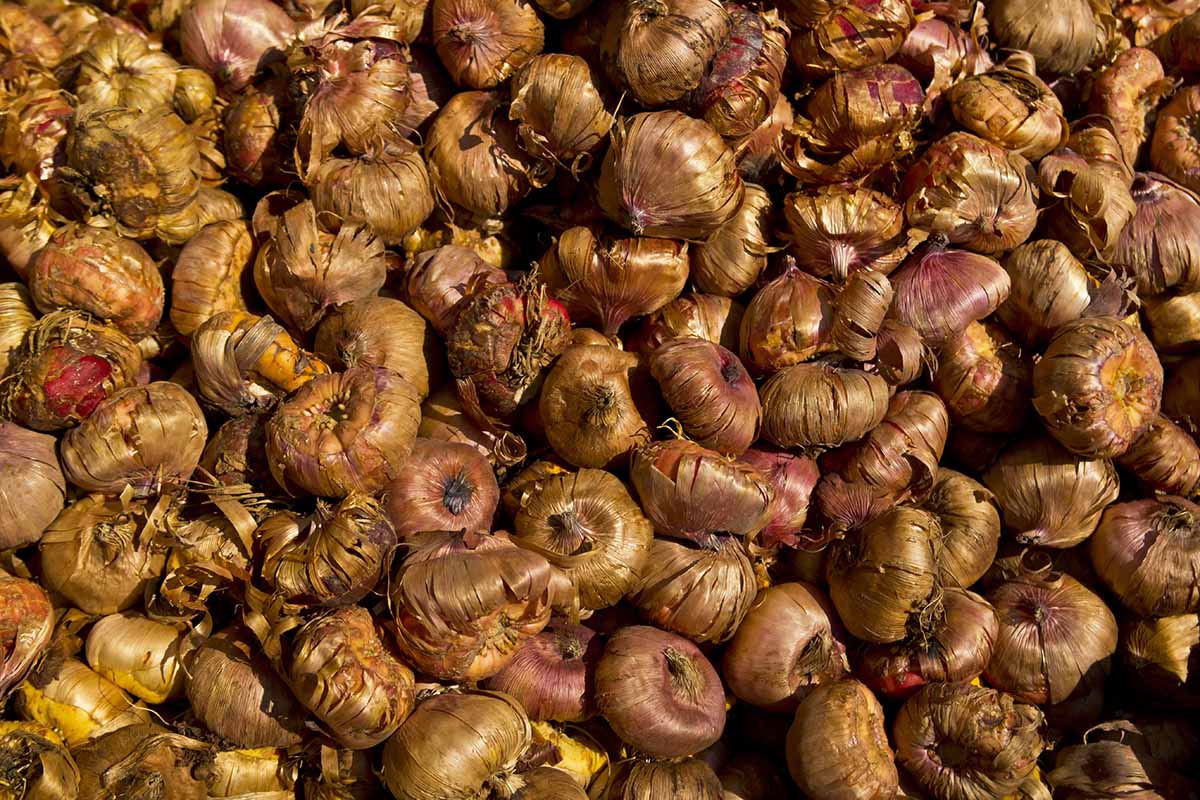
Lay the bulbs on a piece of cardboard or screen in a single layer and place in a warm location out of direct sunlight with good air circulation.
Allow the bulbs to dry for seven to 10 days, turning them over after three or four days.
After curing, trim away any remaining foliage and roots and brush off any missed soil.
If desired, you can dust the corms with a fungicide – but this isn’t necessary if they’ve been cured before storage.
Place the corms in a paper bag and fold over the top to close it. Mesh bags work as well.
Place the bag in a cool location with temperatures of 50 to 65°F and store for up to five months. In warm temperatures above 70°F, damage to the corms can occur.
Check the corms after they come out of storage and before planting. Discard any with signs of decay, mold, or soft flesh.
Vernalization Needs
For flowering to occur, corms require a chill time of 12 to 14 weeks at temperatures of 45°F or lower.
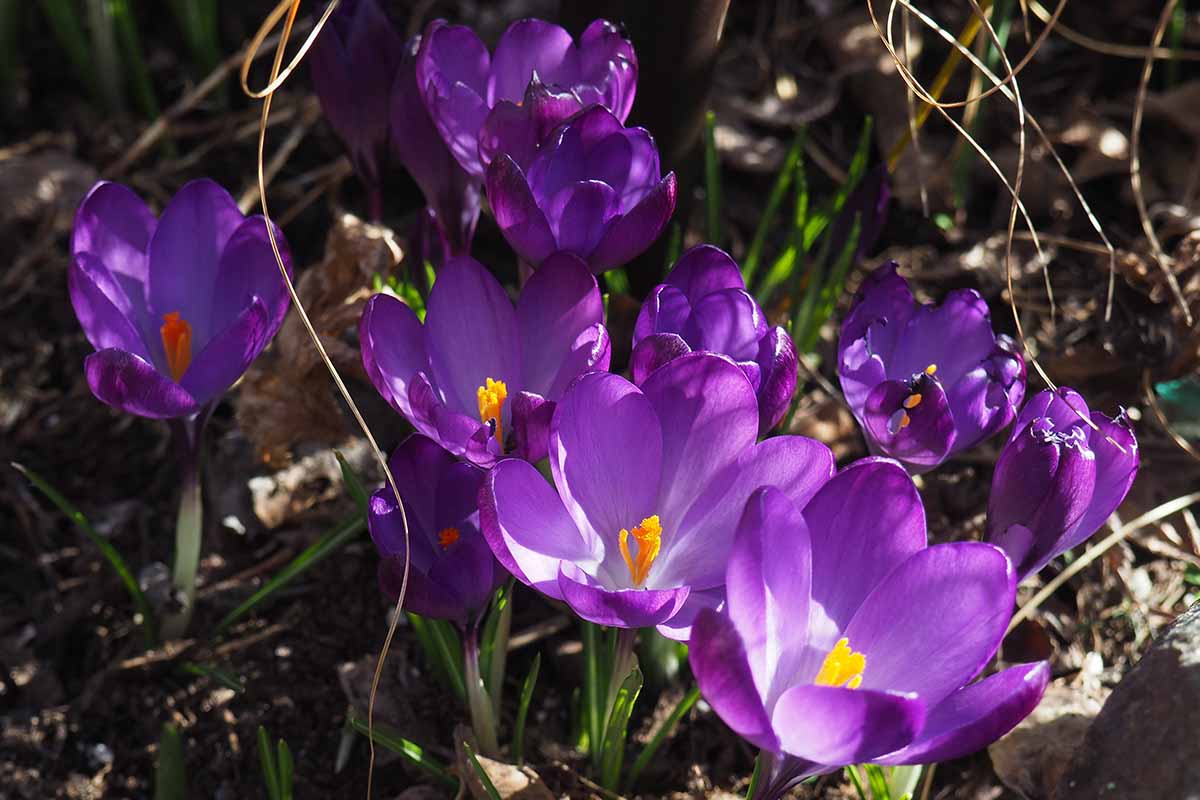
Within their hardiness range, the required chill time is naturally met when planted outdoors.
But for forcing bulbs, you’ll need to cool them in the refrigerator for 12 to 14 weeks to meet their cold requirements.
For all the steps on forcing, check out this guide on how to grow crocuses indoors.
When to Plant
After storage, plant outdoors in beds and containers once the soil temperatures have dropped to 60°F or below in the fall – you can find the details in our guide on when to plant crocus bulbs.
A good rule of thumb for planting is to wait until you’ve had two weeks of overnight temperatures that go down to 50°F.
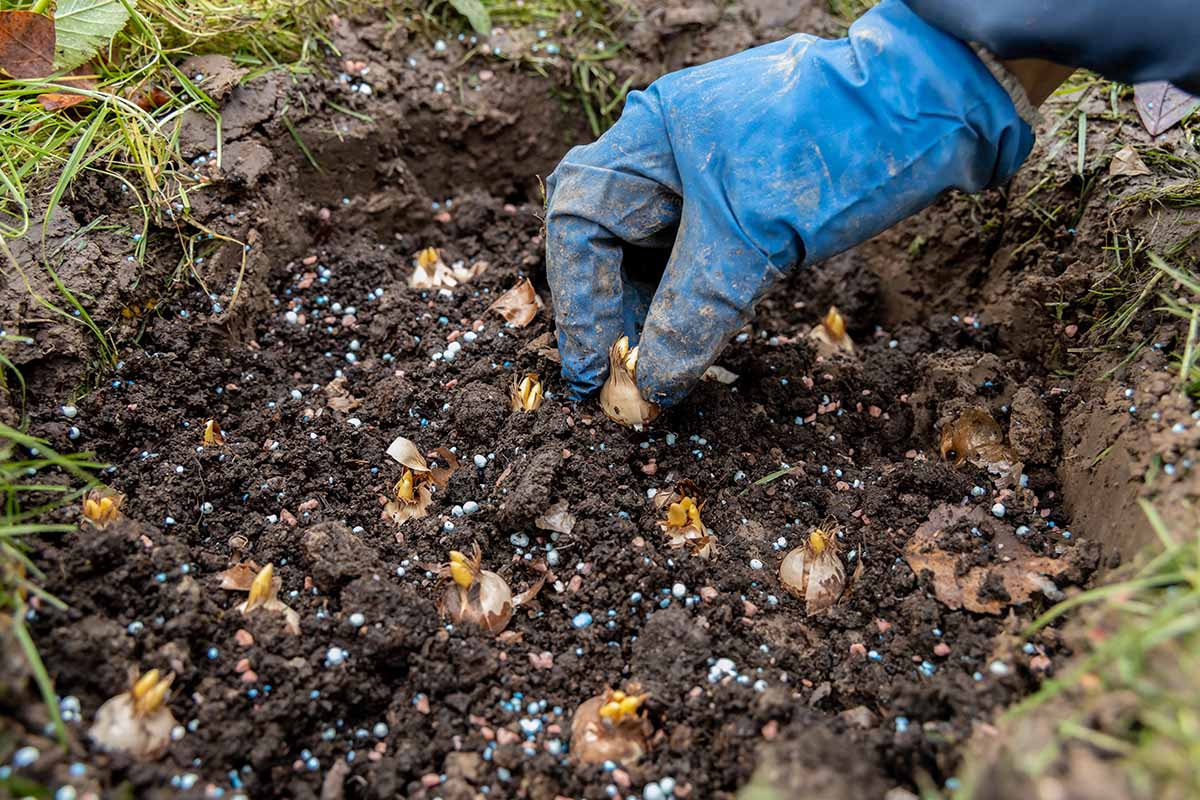
Planting typically takes place from September to November, depending on your region. And the corms should be in the ground at least six weeks before the first hard frost unless you are chilling them artificially for forcing.
This allows time for strong root growth before freezing temperatures arrive.
When you’re ready to plant, check the details for corm depth and spacing in our guide on how to grow and care for crocus flowers.
Bright, Early Blooms
Few things brighten a dreary winter landscape better than the vibrant, early blooms of crocuses!

And storing them for a few months doesn’t impact flower quality as long as the corms are lifted at the right time, cured to remove excess moisture, and kept in a cool, dry environment.
After that, plant them in the fall so they can chill over winter – your flowers will return with gusto early next year.
Any questions on how to lift or store bulbs? Let us know in the comments section below.
And for more crocus know-how, you’ll want to read these guides next:
